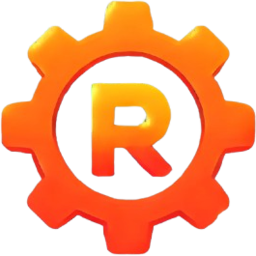Python to Rust: Best Programming Languages to Learn in 2025
The programming landscape is evolving rapidly, with new languages and frameworks emerging to meet the demands of cutting-edge technologies. Staying updated with the latest trends is crucial for developers looking to grow their careers. From Python’s role in data science to Rust’s increasing popularity in systems programming, here’s an in-depth look at the top programming languages to master in 2025.
-
1. Python: The King of Data Science and AI
Python remains a top choice for developers, thanks to its versatility, simplicity, and extensive library ecosystem. It dominates fields like data science, machine learning, and artificial intelligence, supported by powerful libraries like TensorFlow, PyTorch, and Pandas. These tools make Python indispensable for data analysis, predictive modeling, and automation.
Its beginner-friendly syntax has also made Python the first programming language for many learners, ensuring a robust and growing community. Python’s adaptability extends to web development with frameworks like Django and Flask, enabling developers to build scalable applications. With its foothold in emerging technologies, Python is set to remain a vital language for developers in 2025.
-
2. Rust: The Leader in Systems Programming
Rust has gained traction as a high-performance systems programming language, celebrated for its memory safety features and lack of a garbage collector. Its ownership model ensures secure, concurrent programming, making it ideal for systems where performance and security are critical, such as operating systems, embedded systems, and game development.
Rust’s developer-friendly compiler and detailed documentation have earned it a loyal following. As companies like Microsoft and Amazon increasingly adopt Rust, its relevance in building high-performance applications will continue to grow.
-
3. JavaScript: Essential for Web Development
JavaScript remains the cornerstone of modern web development, enabling developers to create dynamic and interactive user interfaces. With frameworks and libraries like React, Angular, and Vue.js, JavaScript powers front-end development, while Node.js extends its capabilities to the back end.
In 2025, JavaScript’s versatility will solidify its role as a go-to language for full-stack development. Its asynchronous, event-driven model makes it ideal for real-time applications, ensuring its continued importance in the tech world.
-
4. TypeScript: Bringing Structure to JavaScript
TypeScript, a superset of JavaScript, enhances code quality with static typing, making it easier to debug and maintain. Developed by Microsoft, TypeScript is widely adopted for large-scale projects that demand scalability and reliability.
Its compatibility with JavaScript libraries and frameworks makes TypeScript a must-learn for web developers. By reducing errors and improving collaboration on complex codebases, TypeScript is set to grow even more popular in 2025.
-
5. Go (Golang): Optimized for Cloud Computing
Go, developed by Google, is renowned for its simplicity and efficiency. Designed for modern cloud infrastructure, Go is ideal for building microservices and distributed systems. Its lightweight concurrency model, powered by goroutines, allows developers to handle thousands of tasks seamlessly.
Go’s role in powering platforms like Kubernetes and Docker highlights its importance in cloud-native development. As cloud computing and microservices continue to dominate, Go will remain a key language for backend engineers in 2025.
-
6. Kotlin: Leading the Charge in Android Development
Kotlin has become the preferred language for Android development, offering concise syntax and modern features. Officially endorsed by Google, Kotlin is interoperable with Java, making it an efficient choice for mobile app developers.
Beyond Android, Kotlin is gaining traction in backend development through frameworks like Ktor. Its ability to run on the Java Virtual Machine (JVM) ensures compatibility with existing Java libraries. As Android continues to dominate the mobile market, Kotlin’s relevance will only grow in 2025.
-
7. Swift: The Heart of Apple Development
Swift has cemented itself as the primary language for iOS and macOS development. Known for its speed and readability, Swift is developer-friendly and fully integrated into Apple’s ecosystem. Its modern features make it a favorite for mobile developers focused on Apple platforms.
With the increasing demand for iOS apps, Swift’s popularity is expected to rise in 2025. Developers targeting the Apple ecosystem will find Swift essential for their toolkit.
-
8. R: Specializing in Data Analysis
R remains a staple for data analysis and statistical computing, particularly in academia, finance, and bioinformatics. Its powerful visualization tools and specialized packages make it a go-to language for advanced statistical modeling and data-driven insights.
Although Python has gained ground in data science, R’s niche in statistical analysis ensures its ongoing relevance for specialized applications in 2025.
-
9. C#: A Pillar of Enterprise and Game Development
C# continues to thrive in enterprise software, Windows applications, and game development, particularly through its integration with the Unity engine. As a core language of Microsoft’s .NET framework, C# offers robust tools for building scalable, cross-platform solutions.
In 2025, C# will remain a key language for developers focused on Microsoft ecosystems or game development, where its object-oriented structure and async programming support shine.
-
10. SQL: The Backbone of Data Management
SQL remains indispensable for managing relational databases and querying large datasets. Supported by major database systems like MySQL, PostgreSQL, and SQL Server, SQL is a must-know for backend developers, data analysts, and business intelligence professionals.
As the demand for data-driven decision-making grows, SQL’s simplicity and power ensure it will continue to be a foundational skill in 2025.
-
Conclusion
The best programming languages to learn in 2025 reflect the tech industry’s diverse needs, from Python’s dominance in data-centric fields to Rust’s strength in secure, high-performance systems. Go, Kotlin, and Swift are shaping cloud and mobile development, while TypeScript and JavaScript remain vital for web technologies.
Choosing the right language to learn depends on your career goals and the industries you aim to enter. By embracing these languages, developers can stay ahead in a rapidly evolving tech landscape and unlock opportunities across various domains.
